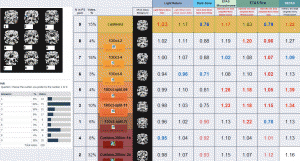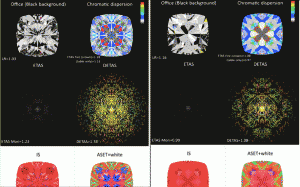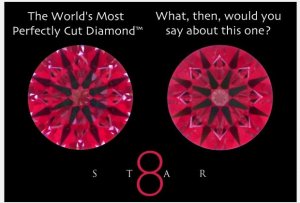- Joined
- Sep 3, 2000
- Messages
- 6,695
I would say the answer is "No". When a viewer looks at a diamond, they want to see lots of sparkle, pattern and plenty of bright light coming back to their eye, but mixed with brightness are some areas of relative darkness which show the pattern and allow concentrations of light to be seen as scintillation. If you think about getting the maximum light back, you'd construct a plain mirror which would send nearly all the light back to your eye without the benefit of the desired pattern , sparkle and contrast elements. It would fail to be as beautiful or desirable. Very few people would seek such a bright, yet uninteresting looking diamond.
Are there experts or consumers who would want to maximize light return beyond today's Ideal Cut ranges if the trade off resulted in the direction of more light return yet less of the other important elements?
Do you think moderation near the top of light return, which is the way it is now, is the right way to describe what the best light performance range is? Or, are we incorrect? Should we seek bright light return faceting designs which give even greater amounts of light back knowing other elements must taper downwards to accomplish this?
What do you think? Do you disagree?
Are there experts or consumers who would want to maximize light return beyond today's Ideal Cut ranges if the trade off resulted in the direction of more light return yet less of the other important elements?
Do you think moderation near the top of light return, which is the way it is now, is the right way to describe what the best light performance range is? Or, are we incorrect? Should we seek bright light return faceting designs which give even greater amounts of light back knowing other elements must taper downwards to accomplish this?
What do you think? Do you disagree?











300x240.png)